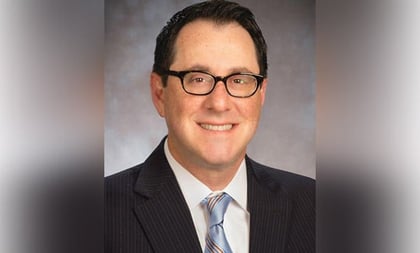More than 20 years ago, the advanced and, indeed, essential way to succeed as a financial advisor was to build relationships with clients. Now FAs must take that principle a step further and become clients’ behavioral coach — or else struggle against a mounting tidal wave of commoditized digital advice. So says behavioral finance expert Brian Portnoy, director of investment education at Virtus Investment Partners, in an interview with ThinkAdvisor.
Helping clients overcome inborn behavioral biases — like the availability bias and the belief bias — can prevent them from making bad investment decisions. That’s critical because clients can be their own worst financial enemies simply being human, Portnoy argues.
A holistic approach pivoting on goals-based investing is the way FAs can help clients achieve wealth, which is, according to Portnoy, “the ability to underwrite a meaningful life.”
He details this philosophy as well as provides practical guidelines in his new book, “The Geometry of Wealth: How to Shape a Life of Money and Meaning” (Harriman House -June 11, 2018).
With Hartford, Connecticut-based Virtus since 2014, Portnoy has counseled thousands of financial advisors about coaching clients using behavioral finance. His book, directed at FAs, employs the three basic shapes of circle, triangle and square to represent the holistic financial planning process.
The author’s sharp angle of vision is that what constitutes a meaningful life is “funded contentment” — which has nothing to do with beating the market, he contends.
In the hedge fund and mutual fund industries for nearly 20 years, the chartered financial analyst previously held posts at Chicago Equity Partners, Mesirow Financial and Morningstar, where he was a mutual fund analyst. He has a doctorate in political economy from the University of Chicago and has lectured at the Securities and Exchange Commission. His first book was “The Investor’s Paradox: The Power of Simplicity in a World of Overwhelming Choice” (2014).
ThinkAdvisor recently interviewed Portnoy by phone. The conversation included a discussion of the provocative concept of the “less-wrong mindset,” which, he says, is maintained by “the best investors.”
Here are highlights of the interview:
THINKADVISOR: “The investor’s primary problem isn’t figuring out the market — it’s figuring out himself,” you write. Please elaborate.
BRIAN PORTNOY: Finance is an intimidating — and limiting — concept. Most people don’t need to worry about finance; they need to worry about money, not just investing because that [comes] at the end of the road, after you’ve figured out how you’re going to make a living and what your savings and spending behaviors are.
How can financial advisors help?
The highest and best use of the financial advisor in 2018 is not as investment expert. It’s as behavioral coach. This is critically important. The investment piece that advisors have typically [handled] is increasingly commoditized; and even when it’s not, it’s becoming a lower and lower margin business. The answer is to take a more holistic approach, which puts behavioral coach at the center of whatever [clients] are trying to do.
How do the advisors you meet with react when you tell them that? Do they resist or embrace it?
Some financial advisors are exactly that: advisors, not brokers. So they absolutely embrace it and are successful. There are brokers who don’t embrace it. They are and will remain very challenged in their [business] prospects.
Why is behavioral finance so important in helping clients invest?
The human brain didn’t evolve in order to make quick and savvy decisions in fast-moving capital markets. People aren’t irrational; they’re just human and normal. A lot of the behavioral biases we’re born with serve a function. In other circumstances, they might cause problems. For example [in investing], we’re selective as to the information we pay attention to; we tend to be overconfident in our beliefs.
How, specifically, should advisors be helping?
The hard part isn’t figuring out the yield curve or the price of oil, the Dow’s level or what the dollar will do relative to the euro — because at the end of the day, no one knows anyway. The really hard part is recognizing that, because we become scared and worried, we’re going to feel the urge to make what could end up as bad decisions.
But isn’t investing expertise just as important?
Choosing specific investments [should take] a much lower priority than thinking about how we’re going to modify our behavior over time through volatile markets — and after that.
To what extent does coaching actually benefit clients?
People who work with financial advisors tend to have better outcomes not because advisors know the markets better but because they’re someone on the outside who can serve as a coach and educator.

Your new book, aimed at advisors, uses three basic geometric shapes to represent the holistic financial planning process. What does the circle stand for?
The circle refers to defining one’s purpose and need to adapt over time because life is unpredictable. It represents the willingness and ability to course-correct through life’s ups and downs.
And the triangle?
[The three points] represent the three main priorities that we have in our money lives: protect, match and reach. Protect is risk management. The first step in setting broad money priorities is to think about the risks you’re taking and to be sure they’re calibrated with the goals you want to achieve.









 July 10, 2018 at 04:48 PM
July 10, 2018 at 04:48 PM











